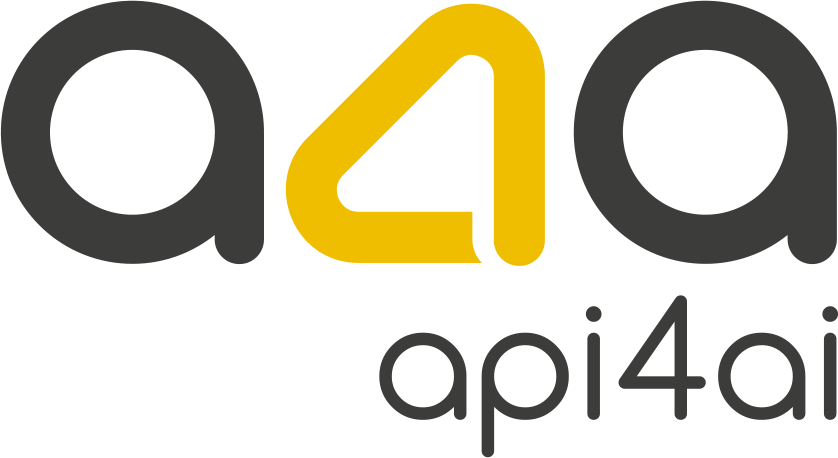Off-the-Shelf AI APIs: The Winning Strategy for Startups
Introduction: The Rise of AI-Powered Startups
Artificial intelligence is no longer a technology reserved for big corporations with deep pockets. It has become an essential tool for businesses of all sizes, helping them improve efficiency, automate processes and deliver smarter products. For startups, AI presents both an opportunity and a challenge. While it opens doors to innovation and competitive differentiation, it also comes with significant technical and financial hurdles. However, with the rise of off-the-shelf AI solutions, even resource-limited startups can now harness the power of AI without the complexities of building it from scratch.
The Growing Significance of AI
AI technology is transforming industries by automating complex tasks, improving decision-making and enhancing customer experiences. From recommendation engines in e-commerce to fraud detection in finance, AI-driven solutions are now deeply integrated into everyday business operations. Startups that fail to embrace AI risk falling behind competitors who leverage it to optimize processes, personalize services and scale their operations efficiently.
Machine learning and computer vision are two of the most impactful AI technologies fueling this innovation. Machine learning allows systems to analyze data, detect patterns and make intelligent decisions without human intervention. Meanwhile, computer vision enables machines to interpret and process visual data — helping businesses analyze images, recognize objects and extract valuable insights from photos and videos. This is particularly useful in areas like retail, security and digital content moderation, where visual data plays a crucial role.
For startups, these AI-driven capabilities offer new opportunities to create intelligent applications that were once out of reach. Whether it’s an app that automatically removes backgrounds from product images, a tool that detects brand logos in social media posts or a system that scans and digitizes documents with OCR, AI-powered solutions can provide immense value. The challenge, however, lies in how startups can implement these advanced technologies without requiring extensive technical expertise or substantial investment.
Challenges Facing Early-Stage Companies
Despite the clear benefits, integrating AI into a startup’s product or workflow isn’t always easy. Many early-stage companies operate with tight budgets, small teams and aggressive deadlines. Unlike large enterprises that can afford to invest in research and development, startups must carefully allocate resources to ensure they reach profitability before running out of funding.
Building an AI solution from scratch requires hiring specialized talent, such as machine learning engineers and data scientists — roles that are both expensive and difficult to fill. In addition to personnel costs, there’s the challenge of acquiring high-quality training data, developing complex algorithms and maintaining the infrastructure needed to deploy and scale AI models. This technical complexity can slow down product development, making it harder for startups to launch their solutions quickly.
Another hurdle is time-to-market. In the fast-paced world of startups, speed is everything. Companies need to validate their ideas, attract customers and iterate on their products before competitors gain traction. If a startup spends months developing a custom AI solution, it risks losing its competitive edge or failing to meet market demand on time.
Because of these challenges, many startups find themselves in a difficult position: they recognize the power of AI but struggle to implement it effectively. This is where off-the-shelf AI solutions come in, providing a cost-effective and efficient way for startups to integrate advanced AI capabilities without the need for deep technical expertise or extensive development cycles. By leveraging AI APIs, startups can focus on building great products and delivering value to customers rather than reinventing the wheel.
The Benefits of Off-the-Shelf AI Solutions
For startups, the ability to integrate AI into their products and services can be a game-changer. However, building AI solutions from scratch is time-consuming, expensive and requires a deep level of expertise. This is why many early-stage companies are turning to off-the-shelf AI APIs — pre-built, ready-to-use solutions that allow businesses to add powerful AI capabilities without the complexity of developing them internally. These APIs offer multiple advantages, from speeding up product launches to keeping costs under control and ensuring scalability as the business grows.
Speed to Market
One of the biggest advantages of using off-the-shelf AI APIs is the ability to get products and features to market much faster. Developing AI models from scratch is a long and intricate process that involves collecting large amounts of data, training models, fine-tuning algorithms and deploying the solution in a way that ensures consistent performance. This can take months — or even years — before a startup has a fully functional AI-powered product.
With pre-built AI APIs, this entire process is bypassed. Instead of spending time and resources on AI research and model development, startups can integrate an API that provides the functionality they need right away. Whether it’s object detection, face recognition, background removal or optical character recognition (OCR), these APIs come with pre-trained models that are ready to use. This means startups can focus on what really matters — building their product, refining the user experience and launching new features quickly.
In the fast-moving startup world, speed is everything. The sooner a company can bring its AI-driven solution to market, the sooner it can validate its idea, attract users and generate revenue. Waiting too long to introduce an AI-powered feature can mean losing an opportunity to competitors who are faster at rolling out innovations. Off-the-shelf AI solutions help startups avoid this risk by providing instant access to advanced AI capabilities without the usual development delays.
Reduced Development Costs and Resources
For most startups, hiring a team of AI specialists is simply not feasible. Experienced machine learning engineers, data scientists and AI developers are in high demand and their salaries reflect this. On top of hiring costs, developing an AI model from scratch requires significant investment in infrastructure, including data storage, computing power and cloud services for training and deploying models. These expenses can quickly add up, making it difficult for a startup to justify the cost, especially when it is still in the early stages of growth.
Off-the-shelf AI APIs eliminate these financial burdens. Instead of hiring a dedicated AI team, startups can access advanced AI functionalities through simple API calls. This drastically reduces the upfront costs associated with AI development while allowing businesses to allocate their budget toward other essential areas like product development, marketing and customer acquisition.
Another major benefit is the predictable pricing model of AI APIs. Most API providers offer flexible pricing structures based on usage, allowing startups to scale their AI capabilities without committing to a large financial investment upfront. This pay-as-you-go approach is particularly attractive for small businesses that need to keep costs manageable while still benefiting from cutting-edge AI technologies.
Scalability and Flexibility
Startups often experience unpredictable growth patterns. Some may start with a small user base and gradually expand, while others may experience sudden spikes in demand due to a successful marketing campaign or viral adoption. This makes scalability a crucial factor when choosing an AI solution.
Off-the-shelf AI APIs are built to handle variable workloads, making them an ideal choice for startups with fluctuating demands. These APIs are typically hosted in the cloud, meaning they can automatically adjust to changes in data volume and processing needs. Whether a startup needs to process a few hundred images a day or millions, an AI API can scale accordingly without requiring the company to invest in additional infrastructure or computational resources.
Flexibility is another key advantage. As a startup grows and evolves, its AI needs may change. Instead of being locked into a single AI model or system, companies using AI APIs can easily switch between different services or upgrade to more advanced solutions as their business requirements shift. This level of adaptability ensures that startups remain agile and responsive to market demands, without being constrained by the limitations of an in-house AI system.
For startups looking to integrate AI into their products, off-the-shelf AI APIs offer the perfect balance of speed, affordability and scalability. By eliminating the need to build AI models from scratch, reducing the cost of development and providing the flexibility to scale with demand, these APIs empower businesses to focus on innovation and growth. In a competitive market where every second counts, leveraging AI APIs can be the difference between falling behind and leading the way.
Practical Use Cases: Transforming Images and Beyond
AI-powered image processing is revolutionizing the way businesses operate, enabling startups to automate complex tasks and enhance user experiences with minimal effort. With off-the-shelf AI APIs, companies can integrate advanced features like text recognition, background removal, object detection and brand monitoring without the need for deep technical expertise. Below are some of the most impactful ways AI APIs are transforming industries and creating new opportunities.
1. Optical Character Recognition (OCR): Automating Data Entry and Document Processing
For businesses dealing with large volumes of text-based images — such as invoices, receipts, contracts or handwritten notes — manually extracting and digitizing information can be time-consuming and error-prone. OCR technology automates this process by recognizing and converting printed or handwritten text into machine-readable data.
Startups in sectors like finance, healthcare and legal services can use OCR APIs to streamline workflows, reduce human error and improve operational efficiency. For example, a fintech company can automatically extract financial details from invoices, while a logistics startup can use OCR to scan shipping labels and track deliveries more efficiently. Instead of hiring employees to manually enter data, businesses can rely on AI to process thousands of documents in seconds.
2. Background Removal for E-Commerce: Enhancing Product Presentation
Product images play a crucial role in online sales, influencing customer trust and purchase decisions. Clean, distraction-free product photos ensure that items stand out on e-commerce platforms, social media and digital ads. AI-powered background removal eliminates the need for expensive studio setups or time-consuming manual editing by automatically extracting objects from images.
Online retailers, marketplace sellers and digital advertisers can leverage this technology to enhance their product visuals instantly. A fashion startup, for instance, can use background removal to create a uniform look across its online catalog, while an automotive marketplace can refine car listings by removing cluttered backgrounds, making the vehicles the focal point. This automation allows businesses to maintain high-quality visuals at scale without investing in costly post-production work.
3. Image Labeling and Object Detection: Automating Content Moderation and Smart Search
AI-driven image labeling and object detection have diverse applications across industries. By recognizing objects, scenes and categories within an image, startups can automate processes like content moderation, inventory management and search enhancement.
For social media and content-sharing platforms, object detection APIs can help filter out harmful or inappropriate images, ensuring compliance with community guidelines. Similarly, online marketplaces can improve search functionality by allowing users to upload a picture of an item and find similar products based on AI-generated tags. In warehouse management, object detection can assist in tracking inventory by automatically recognizing and categorizing products.
These capabilities provide businesses with a smarter, more efficient way to process and manage visual data, reducing reliance on manual intervention.
4. Image Anonymization for Privacy Compliance: Protecting User Identities
With growing concerns around data privacy and stricter regulations like GDPR, businesses must ensure that sensitive personal information in images is protected. AI-powered image anonymization enables companies to automatically blur or mask faces, license plates and other identifiable elements to safeguard user privacy.
This is particularly useful for industries that handle public surveillance footage, user-generated content or medical imaging. For example, a ride-sharing company may use anonymization APIs to blur driver and passenger faces in dashcam footage, ensuring compliance with privacy laws. Similarly, healthcare providers can anonymize medical records that contain patient images before sharing them for research or analysis.
By integrating automated anonymization, startups can avoid legal risks while maintaining ethical AI practices.
5. Brand and Logo Recognition: Monitoring Brand Presence and Preventing Counterfeits
Brand visibility is critical for businesses looking to measure marketing impact and protect intellectual property. AI-powered logo recognition allows companies to track where their brand appears online — whether in social media posts, advertisements or unauthorized counterfeit products.
Startups in advertising and marketing can use this technology to analyze customer engagement by tracking how often their brand is mentioned in images across various platforms. Meanwhile, businesses in retail and fashion can detect counterfeit products by identifying unauthorized use of their logos on fake merchandise.
With automated brand monitoring, businesses gain valuable insights into how their brand is represented across digital spaces, helping them refine marketing strategies and enforce brand protection measures.
6. Industry-Specific Tools: Specialized AI APIs for Unique Business Needs
Beyond general image processing applications, AI APIs are now catering to niche industries with specialized solutions. These tools allow startups in retail, beverages and automotive sectors to integrate AI without developing custom models from scratch.
Furniture Recognition: AI-powered furniture recognition APIs help interior design apps and e-commerce platforms categorize and recommend furniture pieces based on images. Users can upload a picture of a chair or table and receive similar product suggestions, improving the online shopping experience.
Wine and Alcohol Label Recognition: Startups in the food and beverage industry can leverage AI to scan wine and alcohol labels, automatically retrieving product details, ratings and recommendations. This technology enhances inventory management and provides a seamless way for consumers to discover new drinks.
Car Background Removal: Automotive marketplaces and dealerships benefit from AI that removes cluttered backgrounds from car listings, ensuring professional-looking images without manual photo editing.
Other use cases include face detection for biometric security, NSFW content moderation for digital platforms and barcode recognition for logistics and supply chain optimization.
Off-the-shelf AI APIs provide startups with an accessible and cost-effective way to integrate powerful image-processing capabilities into their products. Whether it's automating data entry, improving visual content, enhancing search functionality or ensuring privacy compliance, these solutions eliminate technical barriers and accelerate innovation.
By leveraging AI APIs, startups can focus on building their core business, delivering superior user experiences and staying ahead in a competitive market — without the complexities of developing AI in-house.
Key Considerations When Selecting an AI API
Choosing the right AI API is a crucial decision for startups looking to integrate AI-powered capabilities into their products. With so many options available, it’s important to evaluate potential solutions based on several key factors, including accuracy, ease of integration, pricing and security. The right choice can help a startup scale efficiently and provide reliable AI functionality without unnecessary complexity. Below are the most important aspects to consider when selecting an AI API.
Accuracy and Reliability
The effectiveness of an AI-powered solution depends largely on its accuracy and reliability. If an API frequently misinterprets images, misidentifies objects or fails to extract correct text, it can lead to poor user experiences and costly mistakes. For example, an OCR API used for digitizing invoices must have high accuracy to avoid errors in financial records, while an object detection API for security applications needs to be precise to correctly identify threats.
When evaluating an AI API, startups should look at key performance metrics such as:
Precision and recall – These indicate how well the model correctly identifies relevant data while minimizing false positives and false negatives.
Latency – The time it takes for the API to process a request and return a result. Low-latency APIs are essential for real-time applications.
Model updates – AI models improve over time, so it’s beneficial to choose an API provider that regularly updates its algorithms for better accuracy.
The best way to assess an API’s accuracy is through testing. Many providers offer demo versions or free tiers, allowing developers to experiment with real-world data before making a commitment.
Integration and Ease of Use
A good AI API should be easy to integrate into an existing tech stack without requiring significant modifications. Startups often have small teams with limited resources, so an API that is complicated to implement or requires extensive customization can slow down development and increase costs.
Key factors to look for when evaluating an API’s usability include:
Comprehensive documentation – Clear, detailed instructions with code examples make it easier for developers to understand how to use the API.
Well-structured endpoints – A simple and intuitive API structure allows for seamless communication between applications.
SDKs and libraries – Some AI API providers offer SDKs in popular programming languages like Python, JavaScript or Java, reducing development effort.
Support and community – Responsive customer support and an active developer community can be invaluable when troubleshooting integration issues.
Startups should also consider whether the API can be used across multiple platforms (web, mobile, cloud) and whether it supports commonly used frameworks or deployment environments.
Pricing and Scalability
Cost is always a major concern for startups and AI APIs come with different pricing models that may impact long-term viability. While some solutions charge a flat monthly fee, others offer pay-as-you-go pricing based on usage. Choosing the right model depends on the startup’s specific needs and projected growth.
Free trials and limited-tier plans – Many API providers offer free usage limits, allowing startups to test features before committing to a paid plan.
Pay-as-you-go pricing – This model lets companies scale their costs according to actual usage, making it a flexible choice for startups with fluctuating demand.
Enterprise packages – For businesses expecting high-volume usage, enterprise plans with bulk pricing or dedicated server options may be more cost-effective.
Startups should also check whether an API provider charges additional fees for higher request limits, faster processing speeds or priority support. An AI API that starts off affordable but becomes expensive as usage scales may not be a sustainable choice in the long run.
Security and Compliance
Data security is critical, especially when dealing with sensitive information such as personal images, financial records or customer identities. AI APIs often process large amounts of user data, making it essential to ensure that the provider follows strict security standards.
Key security considerations include:
Encrypted data transfers – APIs should use protocols like HTTPS and SSL/TLS to protect data while in transit.
Secure data storage – If the API stores processed data, it should offer encryption and strict access controls to prevent unauthorized access.
Compliance with regulations – Depending on the industry, compliance with laws like GDPR (General Data Protection Regulation), CCPA (California Consumer Privacy Act) or HIPAA (Health Insurance Portability and Accountability Act) may be required.
For startups working in regions with strict data protection laws, choosing an AI API that offers on-premise deployment or regional data storage options may be necessary to maintain compliance.
Selecting the right AI API is about more than just choosing the most advanced model — it’s about finding a solution that balances accuracy, usability, cost and security. Startups should take the time to evaluate APIs based on real-world testing, integration simplicity, pricing models and data protection measures. By making an informed choice, they can ensure a smooth AI adoption process while keeping their operations scalable, secure and cost-effective.
When Custom AI Development Makes Sense
While off-the-shelf AI APIs offer a fast, cost-effective way to integrate AI into a startup’s product, they are not always the perfect solution for every business. In some cases, a company may find that pre-built AI tools don’t fully meet their unique requirements, limiting their ability to scale, optimize costs or gain a competitive advantage. This is where custom AI development becomes a strategic investment. Developing a tailored AI solution can offer startups greater flexibility, improved efficiency and long-term value — especially when combined with ready-made AI APIs.
Unique Business Requirements
Off-the-shelf AI solutions are designed to serve a broad range of use cases, making them incredibly versatile. However, for startups operating in highly specialized or emerging industries, these generic solutions may not always provide the level of precision, customization or control needed to achieve business goals.
A few scenarios where custom AI development may be necessary include:
Industry-specific needs: A startup working on precision agriculture may need an AI model that can detect specific plant diseases, something that a general object detection API might not be trained for.
Highly regulated industries: In fields like healthcare or finance, compliance with data security regulations might require AI models to be trained on private datasets and deployed on-premises rather than through cloud-based APIs.
Unique customer experiences: Some companies differentiate themselves through highly personalized user interactions. A fashion recommendation platform, for example, might need a custom AI model that understands a particular style or shopping behavior beyond what an existing recommendation API can offer.
Advanced performance requirements: Pre-built AI APIs have predefined limitations on accuracy, latency or processing speed. If a startup needs real-time AI processing with near-zero latency (e.g., for autonomous drones or robotics), a custom AI model optimized for speed and efficiency may be required.
In these cases, investing in custom AI development ensures that the solution is designed specifically for the company’s needs rather than trying to force a general-purpose API to fit a specialized problem.
Long-Term Cost Efficiency and Competitive Advantage
While developing a custom AI solution often requires a higher upfront investment, it can pay off in the long run — particularly for startups with high usage volumes or specific AI-driven business models. Many off-the-shelf AI APIs charge on a per-usage basis, meaning that as the startup scales, costs can rise significantly. Over time, the cumulative cost of API calls may surpass the cost of building and maintaining an in-house AI solution.
For example:
A logistics company processing millions of scanned invoices per month with an OCR API might find that the recurring API costs become unsustainable. By developing a proprietary OCR model, they can reduce per-transaction expenses and improve profit margins.
An e-commerce platform using an AI-powered product recommendation API may struggle to differentiate itself from competitors using the same technology. A custom-built recommendation engine trained on proprietary customer data could provide more accurate suggestions, leading to better user engagement and conversion rates.
Beyond cost savings, a custom AI solution can provide a competitive advantage. Startups that develop proprietary AI technology can create unique product features that competitors cannot easily replicate. This differentiation can become a key selling point and a strong barrier to entry for new market players.
Balancing Ready-to-Go APIs and Tailored Solutions
For most startups, an all-or-nothing approach isn’t necessary. Instead of choosing between off-the-shelf AI and fully custom models, a hybrid strategy can be the best way forward. By leveraging proven AI APIs for common tasks while developing custom AI for niche requirements, startups can strike the right balance between cost efficiency and innovation.
For example:
A real estate platform might use an off-the-shelf object detection API to recognize furniture in property listings but train a custom AI model to estimate the age and condition of furniture based on wear patterns.
A video content moderation service could rely on an existing NSFW detection API to flag explicit content while building its own AI model to detect specific types of harmful content that require specialized moderation.
A personalized shopping assistant could use a pre-built image recognition API to identify clothing items but develop a custom AI model to analyze individual user preferences and suggest fashion trends.
By following this approach, startups can minimize development costs and time-to-market while still building unique, high-value AI-driven products.
Custom AI development makes sense when a startup has specialized needs that off-the-shelf APIs can’t fully address or when long-term cost savings and differentiation are critical to success. However, building AI from scratch isn’t always necessary. The smartest approach for most startups is to combine pre-built AI APIs for general functionality with custom AI solutions for their most unique and valuable features. This allows companies to stay agile, scale efficiently and build truly innovative products without being weighed down by unnecessary complexity or costs.
Implementation Strategies for Startup Success
Integrating AI-powered APIs into a startup’s product is just the first step. To truly harness the benefits of these technologies, businesses need a well-planned implementation strategy. A thoughtful approach can ensure that AI enhances the user experience, remains cost-effective and scales efficiently as the company grows. Below are four key strategies that startups should follow to successfully implement off-the-shelf AI solutions.
1. Quick Proofs of Concept (PoCs)
Before committing significant resources to AI integration, startups should first test the feasibility and effectiveness of AI-powered APIs through small-scale pilot projects, also known as Proofs of Concept (PoCs). A PoC allows startups to assess whether a particular AI solution aligns with their business goals without making a full investment upfront.
For example, an e-commerce platform considering an AI-powered background removal API can start by applying the technology to a limited batch of product images. If the results improve image quality and boost conversion rates, the startup can confidently scale the solution across its entire product catalog.
Key benefits of running a PoC include:
Risk reduction: Identifying potential limitations before full deployment.
Faster decision-making: Quickly determining whether an API meets business needs.
Cost efficiency: Avoiding unnecessary expenses on AI solutions that may not deliver the expected value.
The PoC phase should have clear success criteria, such as improved accuracy, reduced manual workload or enhanced customer engagement. If the API performs well, startups can proceed with full-scale implementation. If not, they can explore alternative AI solutions or adjust their strategy.
2. Iterative Development
Instead of trying to implement AI-driven features all at once, startups should adopt an agile, iterative approach that allows them to refine and improve their AI-powered solutions over time. This methodology ensures that AI enhances the product in a meaningful way while adapting to real-world user needs.
Startups can follow these steps for an iterative AI development cycle:
Launch a minimal viable AI feature: Introduce a basic version of the AI-powered functionality and release it to a small group of users.
Gather feedback and analyze performance: Monitor how users interact with the feature and collect insights on any issues or limitations.
Refine and optimize: Use feedback and data to improve the AI model, making adjustments to parameters, training data or API configurations.
Expand and scale: Once the AI-powered feature meets expectations, roll it out to a wider audience and continue monitoring its effectiveness.
For example, a startup using an image labeling API for content categorization can start with a simple tagging system. Based on user feedback, they can gradually improve it by fine-tuning the API settings, adjusting confidence thresholds or integrating additional metadata to make search results more relevant.
3. Performance Monitoring and Optimization
AI models are not static; they require continuous monitoring and fine-tuning to maintain accuracy and efficiency. If an AI API starts producing inconsistent results, the startup must identify the cause and make necessary adjustments.
Key performance metrics to track include:
Accuracy and precision: Measuring how well the AI API produces correct results.
Latency: Ensuring that AI responses are fast enough for real-time applications.
User engagement and satisfaction: Evaluating whether the AI-driven feature improves customer experience or adds unnecessary friction.
If performance declines, startups have several optimization options:
Fine-tune API parameters: Many AI APIs allow developers to adjust confidence levels, model settings or image quality thresholds to improve accuracy.
Retrain or supplement AI models: If an API supports custom training, startups can provide additional data to improve accuracy for specific use cases.
Explore alternative APIs: If an existing API no longer meets performance needs, it may be worth switching to a more advanced or specialized solution.
For example, a startup using a face detection API for identity verification may find that it struggles with low-light images. They could address this by adjusting detection thresholds, preprocessing images before sending them to the API or switching to an AI provider that specializes in low-light recognition.
4. Data Privacy and Ethics
AI-powered applications often process sensitive user data, including personal images, biometric information or transaction details. Startups must take privacy, security and ethical considerations seriously to build user trust and comply with legal regulations.
Key principles for AI privacy and ethics include:
Compliance with regulations: Ensure that AI-powered features align with GDPR, CCPA and other data protection laws. This is especially important for startups handling personally identifiable information (PII).
Transparent data policies: Clearly communicate to users how their data is being collected, processed and stored. If data is being used to improve AI models, users should have the option to opt out.
Secure data handling: Implement encryption protocols for data transmission and storage to prevent unauthorized access.
Bias mitigation: Regularly audit AI models for potential biases that could lead to unfair or inaccurate results.
For example, a startup using an AI-powered image anonymization API should ensure that the system effectively removes identifiable information while preserving image quality. Additionally, they should allow users to review and control how their images are processed.
Successfully integrating AI-powered APIs into a startup’s workflow requires more than just choosing the right solution — it demands a strategic approach to implementation. By starting with small PoCs, using an iterative development process, continuously monitoring performance and prioritizing data privacy, startups can maximize the benefits of AI while minimizing risks. With these strategies in place, AI becomes not just a tool but a long-term driver of innovation and growth for emerging businesses.
Conclusion: Setting the Stage for AI-Driven Growth
Artificial intelligence has become an essential tool for startups looking to innovate, optimize workflows and create smarter products. Off-the-shelf AI APIs provide a fast and cost-effective way to integrate powerful AI capabilities without the need for complex development, specialized talent or significant upfront investments. For startups that want to stay ahead in competitive markets, embracing AI through ready-made solutions is not just an option — it’s a necessity.
Recap of the Competitive Edge
Throughout this discussion, it’s clear that off-the-shelf AI APIs drastically reduce the barriers to entry for startups. They eliminate the need for time-consuming model training, reduce development costs and allow businesses to roll out AI-driven features at an unprecedented speed. Instead of spending months (or years) building an AI model from scratch, startups can integrate a pre-built solution and focus their energy on refining their core product.
Additionally, AI APIs offer built-in scalability, meaning that as a startup grows, it can seamlessly increase its AI usage without re-engineering its entire infrastructure. This flexibility allows companies to adapt to changes in customer demand, experiment with new features and respond quickly to market shifts—all while keeping operational costs under control.
By leveraging AI APIs, startups are able to punch above their weight, competing with larger enterprises that have traditionally had the advantage of greater financial and technical resources. Whether it’s automating repetitive tasks, enhancing user experience or improving decision-making with real-time data, AI APIs provide a competitive edge that no startup can afford to ignore.
Looking Toward the Future
The AI landscape is evolving rapidly and its role in the startup ecosystem is only going to expand. As AI models become more refined and API providers introduce even more advanced capabilities, startups will have access to increasingly powerful tools without needing to build AI expertise in-house.
In the coming years, we can expect:
Greater accessibility: AI will continue to become more affordable and user-friendly, lowering the technical barrier for even non-technical founders.
More specialized APIs: AI providers will develop more industry-specific APIs that cater to niche markets, enabling deeper customization and improved performance for targeted applications.
Advancements in AI automation: Startups will be able to automate even more complex tasks, from dynamic customer support interactions to predictive analytics for business growth.
Improved regulatory compliance tools: As AI governance and ethics become more critical, providers will introduce better privacy and compliance solutions, making it easier for startups to handle data responsibly.
The future of AI for startups is not just about integrating existing solutions — it’s about staying agile and continuously evolving as the technology advances. Those who remain informed and adaptable will be best positioned to take advantage of new breakthroughs.
Next Steps
For startups looking to leverage AI effectively, the next step is clear: start exploring and experimenting with AI APIs.
Begin by testing proven APIs in small, controlled environments to determine which solutions best fit your business needs.
Use an iterative approach — start with essential AI features and expand functionality as your business scales.
Consider investing in custom AI solutions when your requirements go beyond what pre-built APIs can offer, balancing ready-made tools with tailored development for long-term efficiency.
Stay updated on AI trends and emerging technologies — the AI ecosystem is fast-moving and startups that proactively adapt to innovations will maintain a competitive edge.
Finally, startups should incorporate feedback loops to continuously refine their AI strategy. AI is not a “set it and forget it” solution — regular performance reviews, customer insights and ongoing optimizations will ensure that AI-driven features remain relevant, efficient and impactful.
Final Thoughts
AI is no longer a futuristic concept — it is a practical tool that startups can use today to accelerate growth, improve efficiency and enhance customer experiences. Off-the-shelf AI APIs provide a low-risk, high-reward entry point into this technology, allowing startups to innovate without being held back by technical limitations. By strategically integrating AI and staying informed about industry advancements, startups can build smarter products, streamline operations and position themselves for long-term success in an increasingly AI-powered world.






